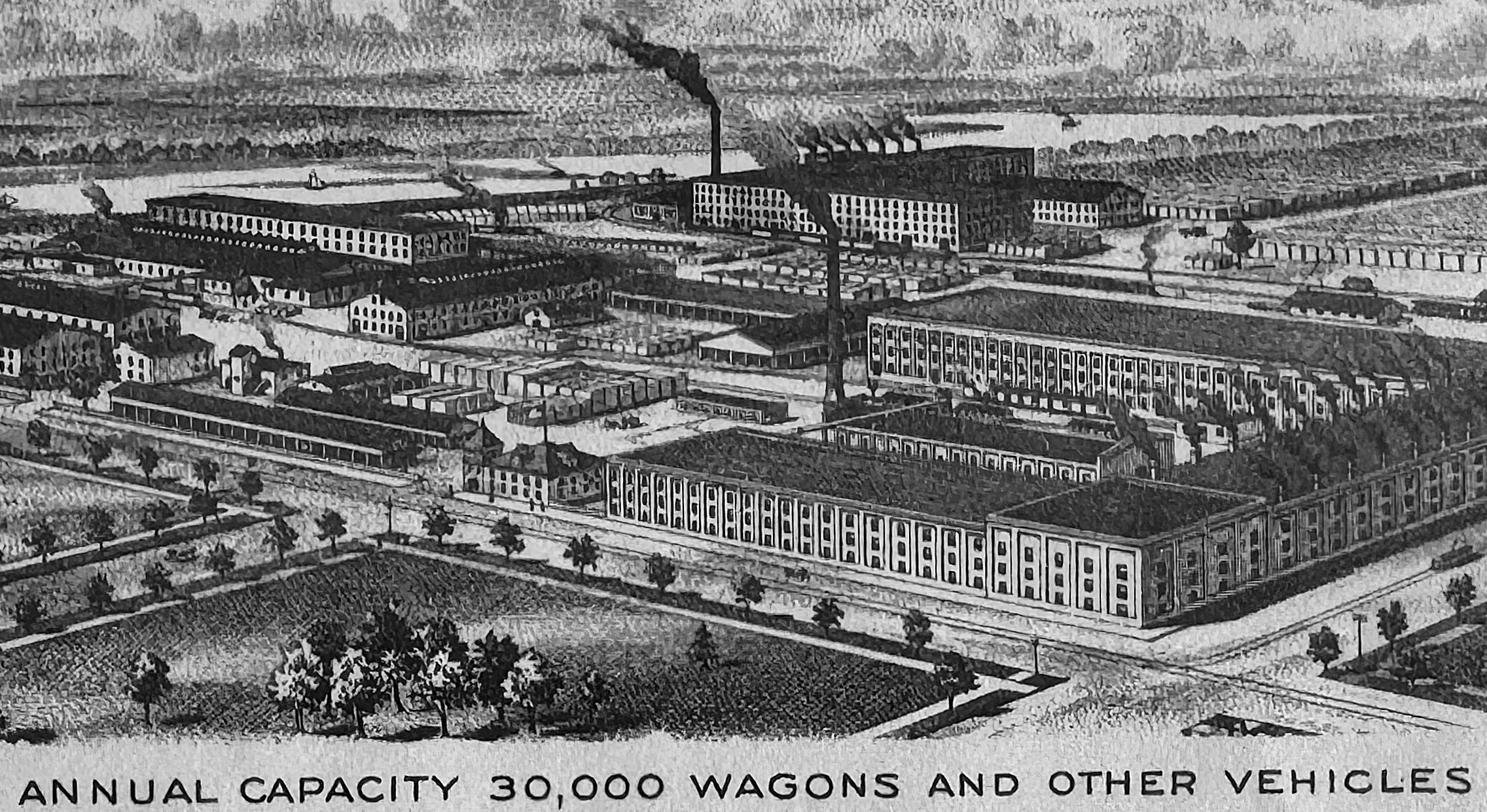I hope everyone had a memorable Easter celebration, sharing the Good News with others. This week, we're back with more chuck wagons to check out and, this time, we'll be looking at a well-known brand from east of the Mississippi River...
Situated on the Ohio River in northwestern Kentucky, the city of Owensboro is known as the 'Bluegrass Capital of the World." It's also home to the Bluegrass Music Hall of Fame and Museum. Coal mining, farming, bourbon, sheep, cattle, and barbecue have long been a part of the area's history. More than a century ago, though, the community had an equally large reputation as a manufacturing hub for several horse-drawn vehicle builders.
While the city never attracted as many wagon and carriage makers as some, manufacturers like the Owensboro Wagon Company carried a strong reputation for quality across the U.S. and some foreign countries. The company traced its roots to 1870 but was officially incorporated in 1883. In the beginning, the wagons were referred to as The Monarch.* This was likely a nod to the company president, M.V. Monarch, as well as the strength of the name itself.
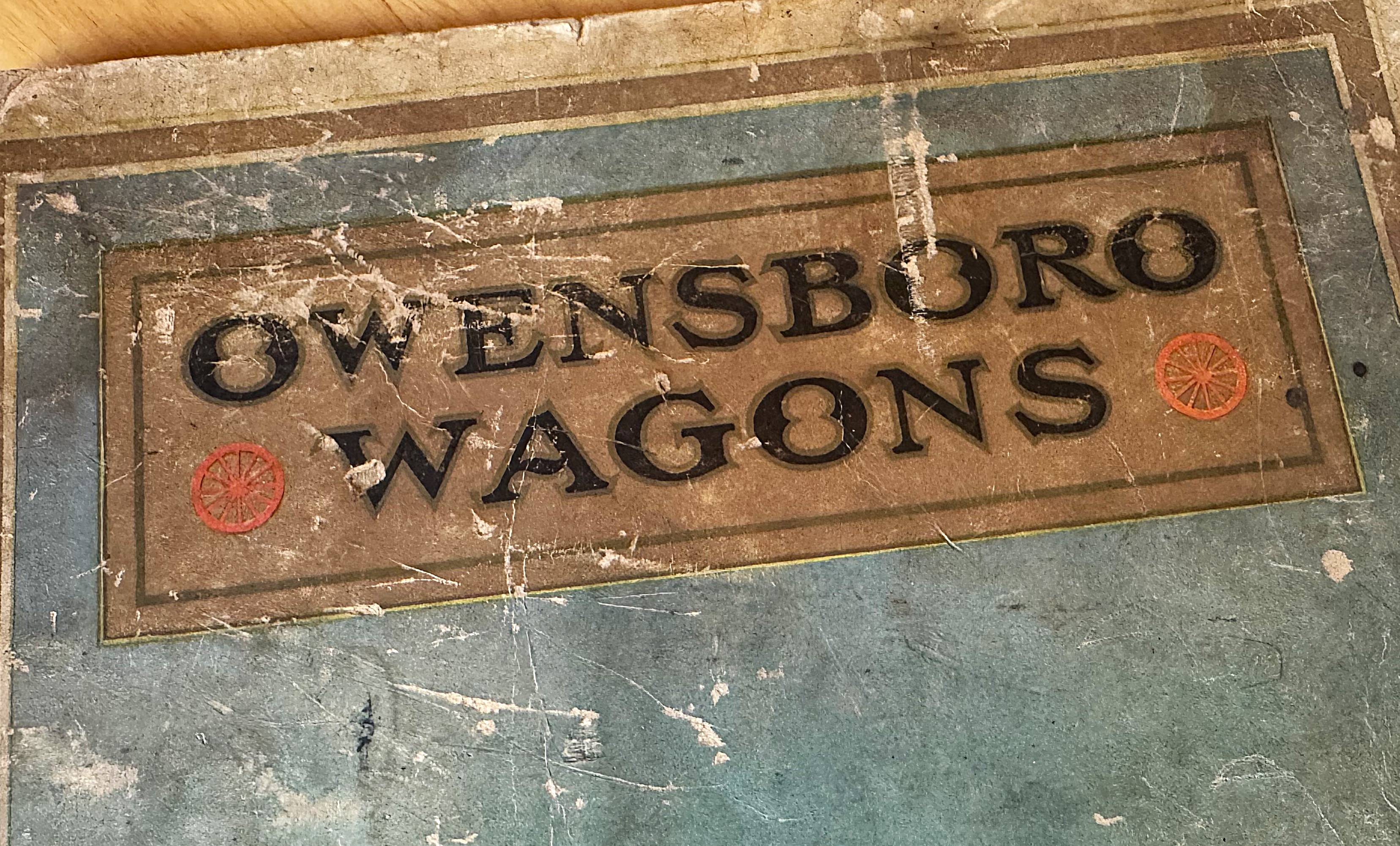
This cover is from an original Owensboro catalog dating to the early 1900s.
As an overview of the city, in 1887, the population totaled 10,000 with less than a dozen horse-drawn vehicle builders. Roughly two decades later, the number of makers had nearly doubled. From the 1880s through the early 1900s, Owensboro-branded wagons enjoyed strong distribution and popularity. Their catalogs were filled with farm and freight wagons as well as drays, spring trucks, coal and ice wagons, four- and eight-wheel logging wagons, and other specialty vehicles.

A tagline from an original Owensboro catalog in the Wheels That Won The West Archives.
Even with extensive production numbers, it's surprisingly hard to find the same diversity of Owensboro products today. When it comes to their farm wagons, it seems that the majority of the known survivors tend to be those with lower-wheels and stiff tongues. Finding a true, drop tongue, high wheel Owensboro farm wagon (rear wheels 52-inches and up) is a bit like someone with no credentials talking their way into Area 51 or Fort Knox... I guess anything is hypothetically possible, but the chances are slim. During all the years that I've scoured this country, I can count on just a few fingers the number of these taller-wheeled survivors. These styles were built, marketed, and sold but, they're good at hiding. So, if you have one. Take good care of it. Knowing a couple guys that have relayed their own Owensboro discoveries in the past, I reached out to see if they might have some photos handy. Both have transformed their finds into chuck wagons.
Vernon Adkins, in northwest Missouri, volunteered to share a few shots of his Owensboro for this post. He purchased this wagon in 2021 and has worked to establish a line of ownership. One of the interesting things on the box is the original stenciled paint related to the selling agency. While the wagon was made in Owensboro, Kentucky, it was shipped to the company's jobber house in Kansas City, Missouri and sold there. We dug through our early files and discovered that the selling dealer name - the Big Four Implement Company - was a reference to a distribution group headed up by the Owensboro Wagon Company, B.F. Avery and Sons, the Staver Carriage Company, and the Thomas Mfg. Company. Our records indicate that Owensboro left the group during the last half of 1914. So, that helps us confirm that this wagon will be no older than 1914. Additional, firsthand examinations of the wagon might help narrow things down even more.

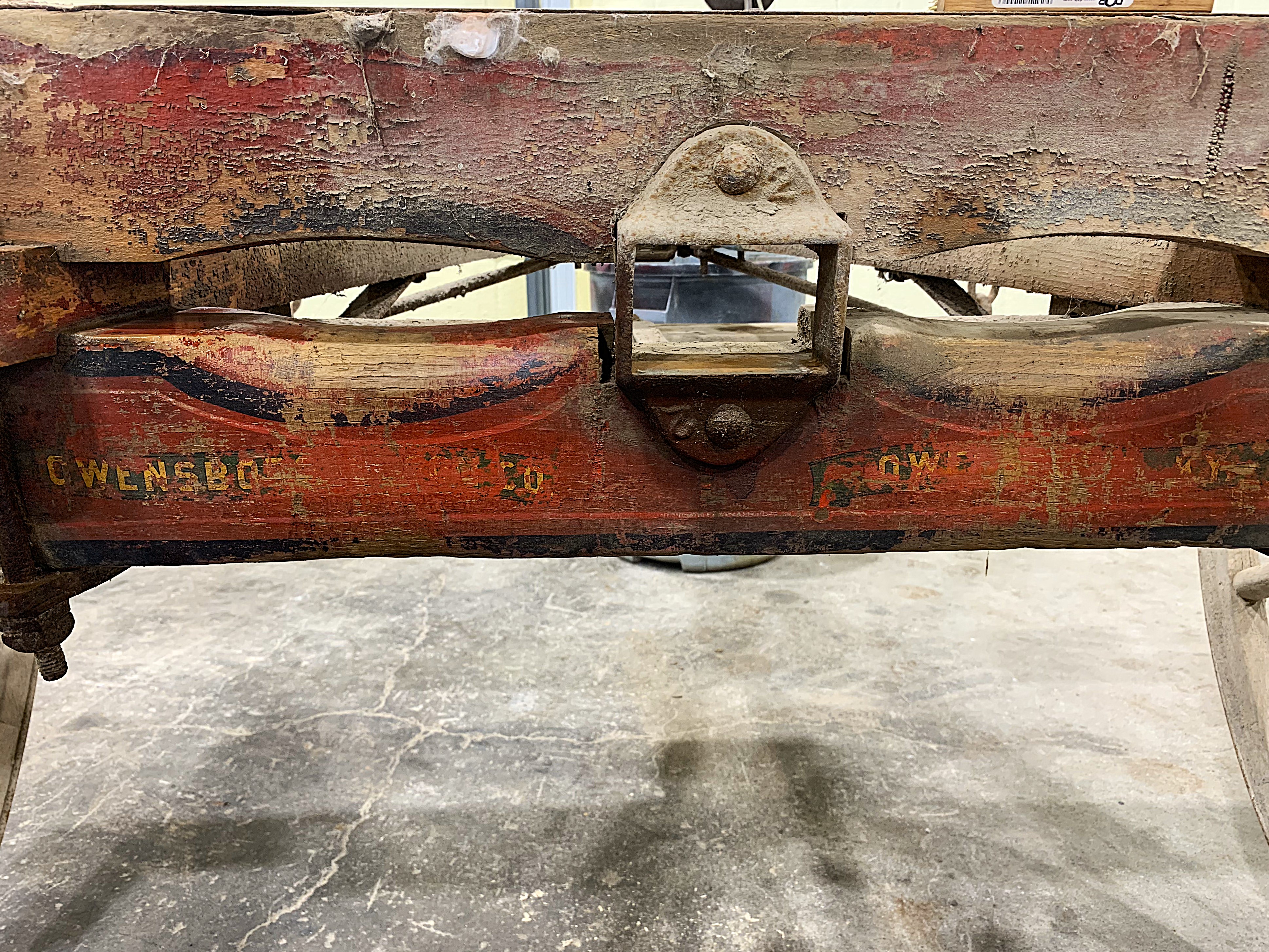
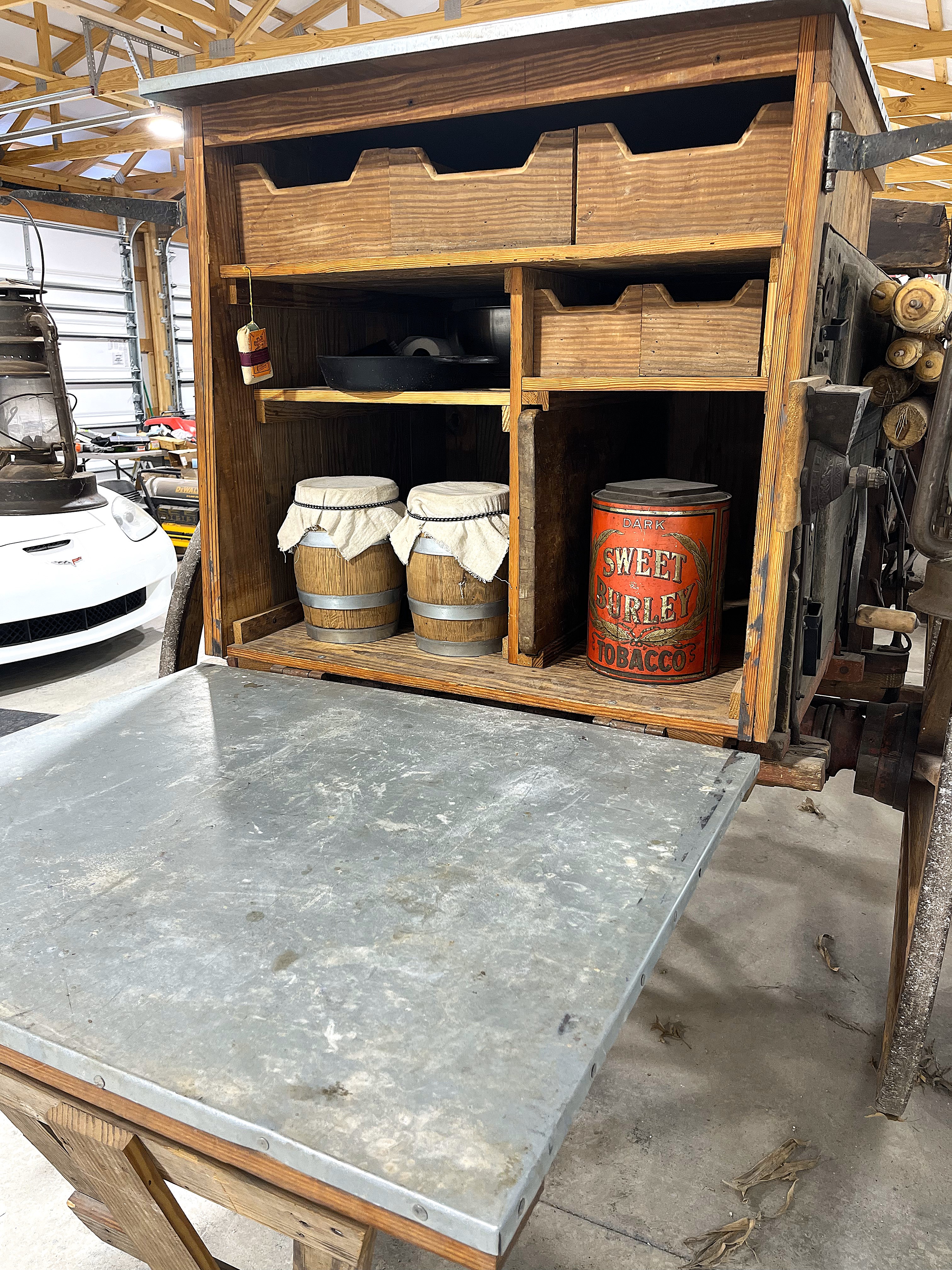
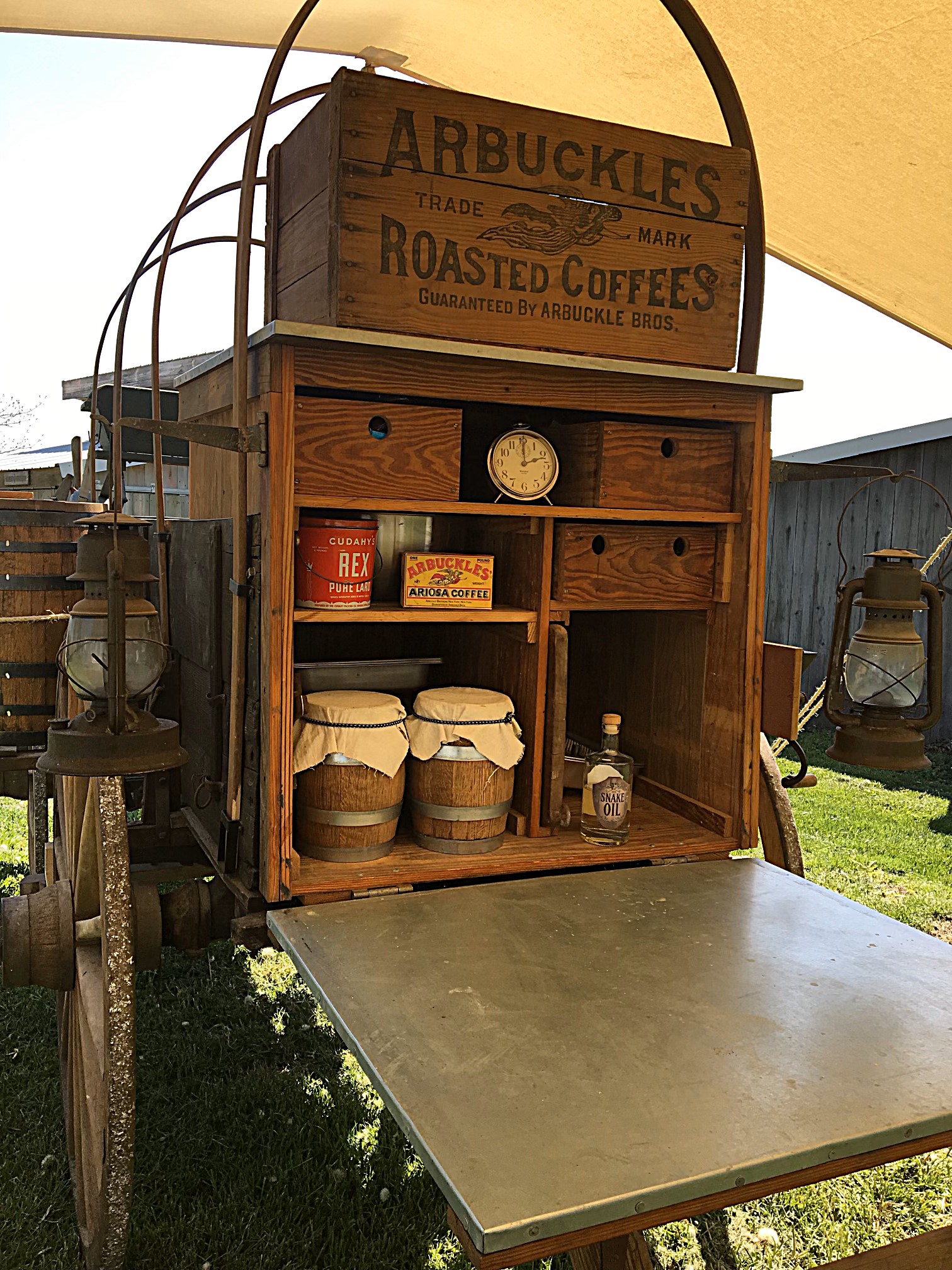
The Owensboro chuck wagon images above are courtesy of Vernon Adkins.
Adkins' wagon is decked out with the original brake hangers, box tighteners, rub irons for the standards, a rein tie, footboard, steam bent (round) front hound, gear brakes, decalcomania logo transfers, jockey box, and paint. In short, thiss wagon retains a significant amount of originality, making it a great foundation for a chuck wagon.
Likewise, Glenn Moreland in Texas is always surrounded by special pieces from the past. In layman's terms, he knows a good wagon when he sees it. A number of years ago, he shared with us that he restored a high wheel Owensboro. With custom seat risers and brakes, this is another rare glimpse at a set of wheels that leads us back to another time. A time when a good wagon wasn't just a status symbol, it was a powerful link to success for farmers, ranchers, and businesses. Couple all that with the cowboy music, wagon knowledge, and craftsmanship that Glenn Moreland is known for, and you have a chuckwagon and camp that exudes the Best of the West.
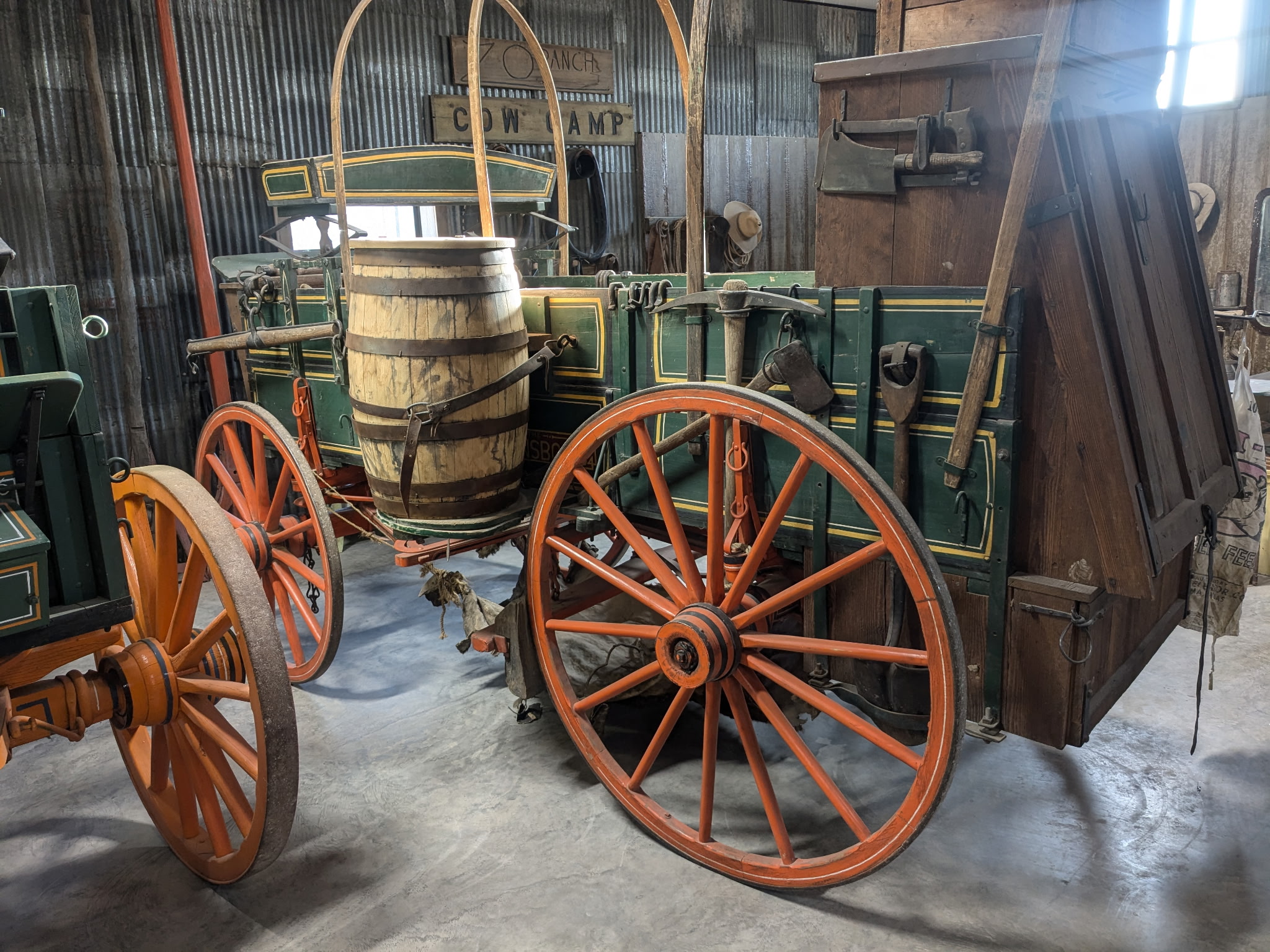
Image courtesy of Glenn Moreland.
Special thanks to both of these fellas. I know they're busy but we appreciate the opportunity to get a closer look at their treasures. Coming soon... A Dakota showstopper!
* Period documentation in the Wheels That Won The West® Archives
Psalm 20:7
